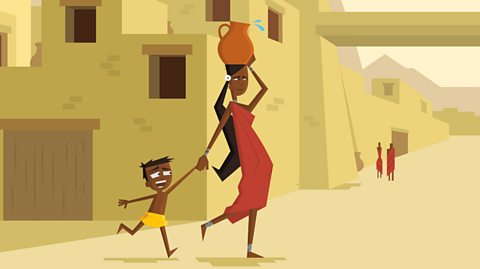How do we know about the Indus Valley?
Most of what we know about the Indus people is from art and well-crafted items that have been found. They made toys and small figures of people and animals, using metal and clay.
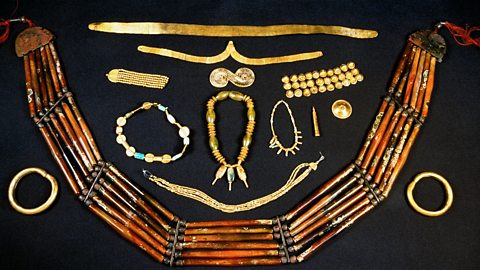
- The Indus people made incredible jewellery. These pieces are made from gold and agate (a coloured mineral stone).
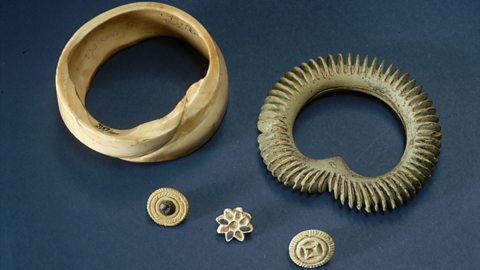
- Indus traders carried bangles and ear studs, like these, in their trading packs.

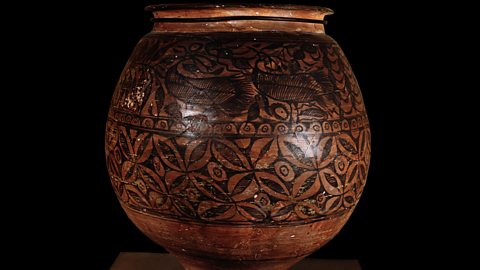
- Indus potters made plain everyday pots, and fine decorated pots like this one.
- The top half of the pot is decorated with painted birds.
What does Indus Valley writing tell us?
The Indus people wrote on soft clay using pointed sticks or by scratching marks onto stone and metal.
People wrote the first line from right to left, the second line from left to right, and so on.
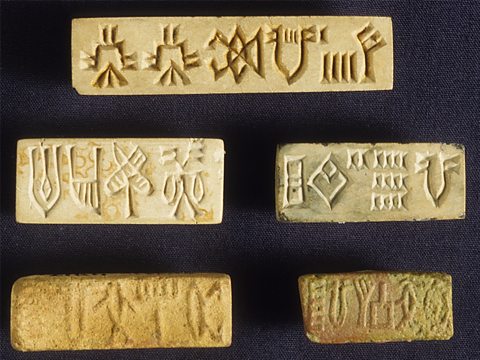
Indus Valley writing used at least 400 picture-signs.
They were not letters like in our alphabet.
The longest bit of writing found has only 26 characters.
No one knows what language the Indus people spoke, and no one has yet been able to read their writing.
Watch: What has been found from the Indus Valley?
Find out what artefacts have been discovered in the ruins of Mohenjo-Daro
When Mohenjo-Daro was first excavated by Sir John Marshall and a team of Indian archaeologists in the 1920s, they revealed to the world a vast, buried, forgotten city.
A major find for Mohenjo-Daro was a stone statue – the Priest King.
Archaeologists have suggested that he could have been an important ruler, or a religious leader, or even a resident foreign dignatory.He has a headband which looks similar to gold ones found elsewhere in the region.
So, we know they had access to precious metals, and the skills and technology to work the metals.
There have been lots of artefacts found at Mohenjo-Daro, which can help to build up a picture of how people lived.What do these artefacts tell you?
Can we tell what the Indus people believed?
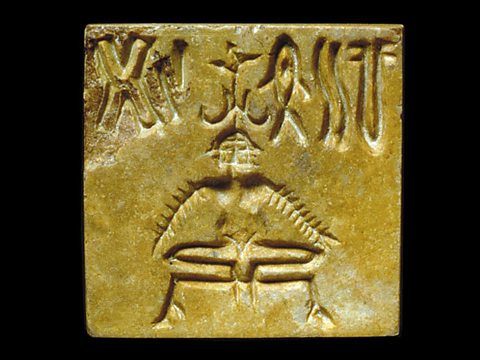
- Pictures on seals and other artefacts show what look like figures of gods.
- The pipal or fig tree is shown on many seals, and is still a sacred tree for many Buddhists and Hindus.
- Many people believe the 'great bath' found in Mohenjo-Daro suggests the Indus people held beliefs about purity.
- Some people think that the Indus religion shaped early Hindu beliefs.

What happened when Indus people died?
Indus Valley people were buried with clay pots and clay figures, as well as beads.
Putting these items in graves may mean that they believed in life after death.
This would mean they could use these belongings again.
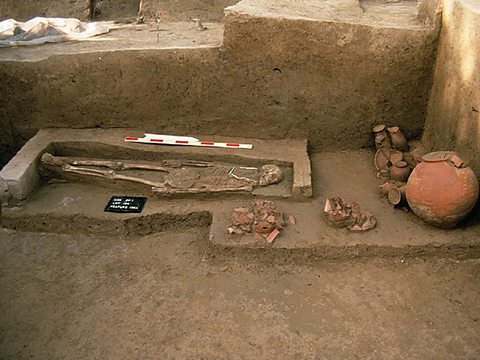
Activity: Quiz – Indus Valley artefacts
Bitesize Primary games. gameBitesize Primary games
Play fun and educational primary games in science, maths, English, history, geography, art, computing and modern languages.

More on Indus Valley
Find out more by working through a topic
- count8 of 8

- count1 of 8
